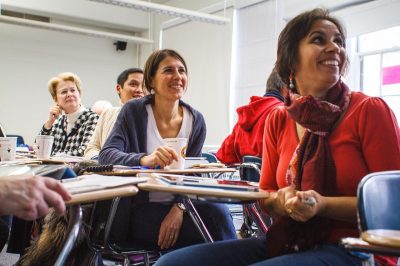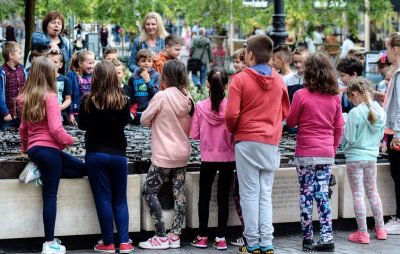Breakfast Club Blog

The BOOST Breakfast Club Blog is a curated space where bloggers from around the world contribute content on a continual basis about a variety of topics relevant to in and out-of-school time. The BOOST Breakfast Club blog is at the heart of an ongoing dialogue where expanded learning and education professionals share their personal thoughts and stories from the in and out-of-school time field. They also tell us what they ate for breakfast!
The BOOST Breakfast Club Blog is Brain Food for In and Out-of-School Time Leaders!
Interested in becoming a blogger? Email breakfastclub@boostcollaborative.org
Click here to Register for a free account or click here to Login to your existing account.
Developing Superheroes
With age also comes reflection. Often this reflection is not sought after by the “elderly” but rather triggered. I was recently approached, after doing a keynote, by a disgruntled site coordinator who wanted to know where I found all the “Unbelievable” staff that did all of the inspirational adventures I had just talked about. This question has always been a double edged sword for me. My gut response was to say “First you have to be what you are looking for!” ...Read More
Picking Teams Painlessly
Being the last one picked is just no fun. What if the last words you heard before you became a team member was “Alright, I guess we have to take you”? The first play hasn’t been made and already, you feel like a failure. For some students, the mere act of picking teams is so difficult they simply choose not to participate in physical activity, thus avoiding the stress. The emotional safety of our students is as essential as the physical safety and it can begin with the act of p...Read More
Adolescent Girls and the Media: A Look Beyond the Mirror
Let’s face it- growing up female can be tough, but growing up female in this day and age can be REALLY tough. There are a LOT (and I mean a lot) of unique challenges that adolescent girls face and one of them happens to be the “M” word. What is the “M” word, you ask? Here’s a hint: something that has the ability to impact girls’ perception of themselves and their body image? Any guesses? Well, chances are you probably said media. If you did (and I’...Read More
After School Funding – How Can You Help?
Well, it’s that time of year when budget negotiations begin to heat up in Sacramento, and once again, the Legislative Analyst’s Office (LAO) is recommending that voters be given the opportunity to amend or repeal Proposition 49. The problem with Prop 49, they say, is its inflexibility. The initiative, which was passed by a 56% majority in November of 2002, guarantees an annual $550 million General Fund appropriation to operate the After School Education and Safety (ASES) program. The...Read More
Marketing Your Program Through Positive Youth Development
Just because you built it, doesn’t mean they will come. Afterschool is no field of dreams. Even with a wonderful curriculum, enthusiastic staff, abundance of supplies and unwavering support from the regular school staff, your program cannot be labeled a success if nobody attends it. Recruitment issues exist at all grade levels. If you serve younger children (K-4th grade), parents usually ensure that the children attend the program, and the children are less likely to rebel at this age. Att...Read More
Best Practices in Afterschool: A Call for Mentorship
Due to the nature of my job, I visit a lot of afterschool programs throughout the country. A common element I’ve noticed at any program, whether they are in schools, community buildings, or churches, is the smell. It is the same no matter where I go. There’s always a hint of disinfectant, perhaps some body odor if it’s a middle school program, crayons, paint, chalkboards, whiteboard markers, or computer labs (I don’t know what that smell is, but there is definitely someth...Read More
Protecting Proposition 49 Funding May Not Protect Providers
The section of California Education Code that establishes the After School Education and Safety (ASES) Program describes its purpose as follows: “…to create incentives for establishing locally driven before and after school enrichment programs… that partner public schools and communities to provide academic and literacy support and safe, constructive alternatives for youth.” The majority of ASES programs operate according to partnership models in which a local education a...Read More

















